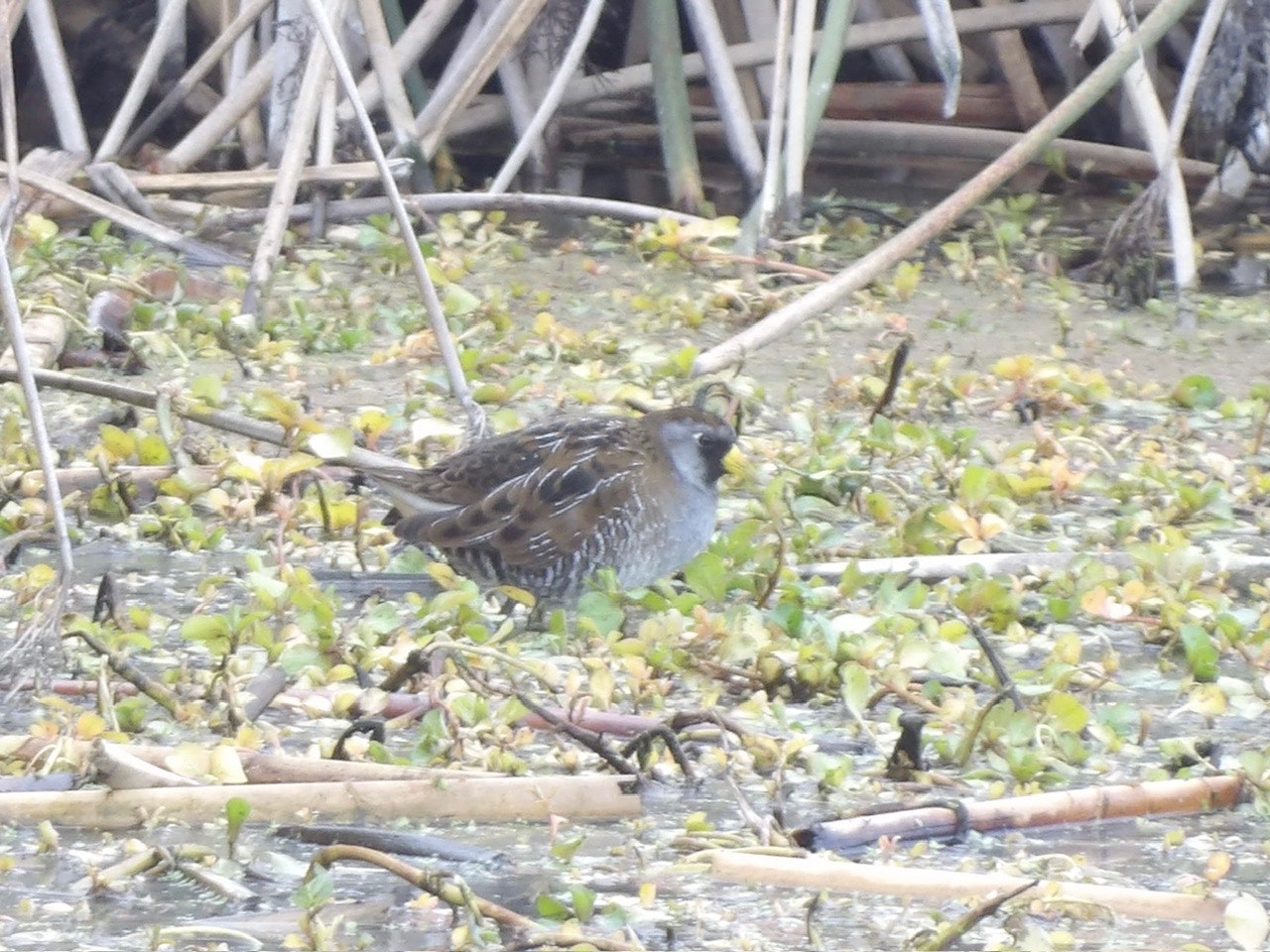Critter of the Quarter - Sora

Meet the Sora (Porzana carolina), a small secretive bird that lives in freshwater wetlands with dense emergent vegetation. The Sora is the most abundant and widespread rail in North America, but it may not seem like it, because it takes some effort to spot.
The Sora has a gray face with a black mask and a thick and stubby yellow bill. It is often described as chicken-like as it walks with a jerking motion, flicking its short tail upwards to show white feathers underneath. It uses long toes to rake through floating vegetation in search of seeds and aquatic insects such as snails, dragonflies, flies, and beetles.
Soras nest at the edges of shallow wetlands in dense patches of cattails and sedges. They build a nest either on top of mounds of vegetation or attached to plant stems above the surface of the water. Males and females form monogamous bonds during the breeding season with pairs courting each other with a 15–30-minute stare-down followed by preening. On average they lay 10-12 eggs, arranging them in two layers. Young leave the nest shortly after hatching, 21-25 days.
Although Sora populations are stable, they rely on wetland habitat that is dwindling due to urban and agricultural development. The elusive Sora was spotted in Moorhen Marsh by the Mt. Diablo Bird Alliance on a recent field trip. We’re happy that Soras have found safe refuge in our wetlands!

.png?ixlib=rb-1.1.0&or=0&w=720&h=720&fit=max&auto=format%2Ccompress&s=9603f311ac34c6738d1b3f1f48a7df4d)






